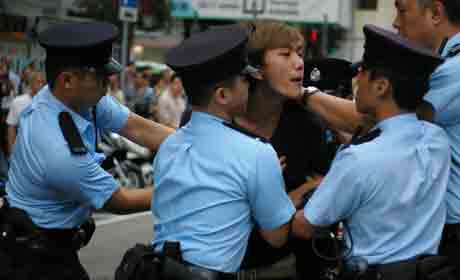
Scoopshot offers an Android and and iPhone app
Finnish start-up Scoopshot this week published details of a study it commissioned among members of the World Association of Newspapers and News Publishers (WAN-IFRA). The study found that 80 per cent of newspaper editors regularly use user-generated content.
User-generated content is at the centre of Scoopshot's business as it provides a service to allow photographers to upload images and videos which are then sold to news outlets.
The start-up launched at the end of last year and now has a user-base of 130,000 mobile photographers in 170 countries and has signed up 50 news outlets as potential buyers for the photos, including "one big global media outlet" in the UK, Petri Rahja, chief operating officer, told Journalism.co.uk.
Scoopshot is not alone in the space of user-generated photos. Citizen journalism agency Citizenside has a photo upload app that allows contributors to be paid for the use of photos, Rawporter does similar, and Newsflare, which earlier this year signed a deal with Northcliffe Digital, provides videos submitted through its app. Those are just some examples.
As with the above platforms, Scoopshot also pays the person who took the photo. Photographers can set their own rates, with Scoopshot providing guidelines.
Rates start at £9 and Scoopshot then adds 30 per cent commission before selling the image or video on to a news outlet. And of course the company is always hopeful that one of its users will capture that 'plane in the Hudson River shot' that will command extremely high prices.

Image by Victor Tsang submitted to Scoopshot
One area Scoopshot has built into its app is verification. Rahja explained that photos taken within the app cannot have been edited or altered in Photoshop and the app verifies the location and time the photo or video was added. "It raises the level of certainty," he said.
Photographers also provide information when submitting the photo, including a telephone number which the newsdesk can see and call to carry out further verification checks and to interview the photographer.
News outlets do not pay to access or search photos, only if they want to use an image or video.
Editorial teams can also use a map function within Scoopshot to search for photos submitted from a location. They can go to a map, draw a circle around an area and find any submissions.
"In a matter of a seconds you can jump all over the world whether you want to be hyperlocal or truly global," Rahja said.
There is also a heat map which shows the number of mobile photographers in an area and newsdesks can send out requests for photos. For example, the heat map shows the number of users in Afghanistan or Japan and therefore the likelihood of being able to get an image from a particular location.
The editorial buyer also gets to opt for exclusivity of photos. News outlets pay 10 times the amount set by the seller if they want exclusivity and the photograph is immediately removed from the library.
"We are not a stock photo company," Rahja explained. "We are a stream of live news photos, all less than 48 hours old so we are never dealing in yesterday's news."
For more on verification see this guide from Journalism.co.uk.
Free daily newsletter
If you like our news and feature articles, you can sign up to receive our free daily (Mon-Fri) email newsletter (mobile friendly).
Related articles
- Digital journalism expert Alastair Reid on TikTok, AI and burnout
- App for journalists: Brain Bump, for pro tips and audience discovery
- Three audio apps to turn your listeners' voices into podcasts and audio features
- Seven free tools for journalists to try in 2021
- App for journalists: MyScoop, for commissioning mobile and citizen journalism









